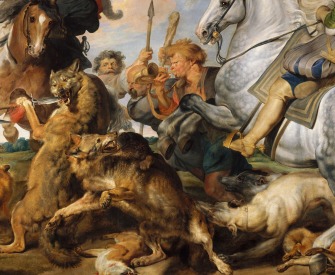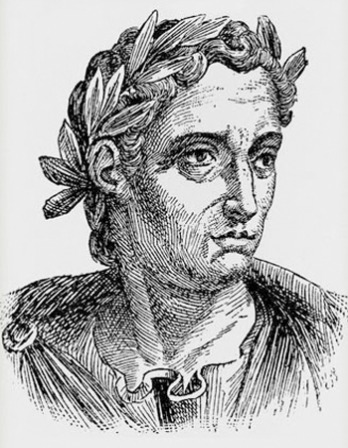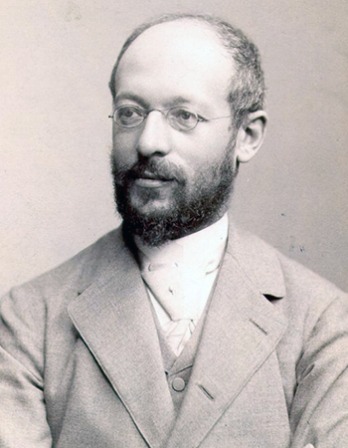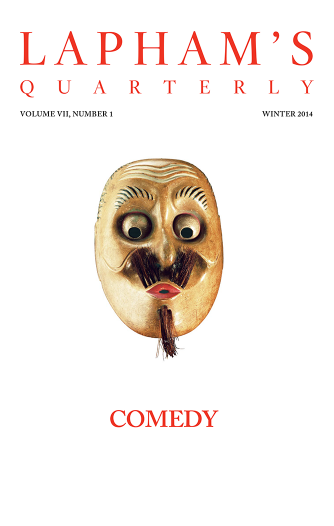Nature is the art of God.
—Thomas Browne, 1635Pattern Recognition
Economic growth partakes in this magical thinking: the capacity of the environment remains constant at infinity.
By Steven Stoll

Factories at Asnieres, Seen from the Quai de Clichy, by Vincent van Gogh, 1887. Saint Louis Art Museum, St. Louis, Missouri.
Economic growth may one day turn out to be a curse rather than a good.
—Hannah Arendt
The World Bank announced recently that food prices are rising, not as the result of a natural disaster devastating crops, but gradually, steadily, inexorably. Since 2000 the global price of wheat has increased 200 percent, food of every kind by 75 percent. Most Americans haven’t noticed the change, but thirty-six countries now require aid to prevent their poorest citizens from starving. The causes are not sluggish transportation, antiquated machinery, or stagnant production. The world harvest of wheat, rice, corn, and other staples has shown no decrease in recent years. The total farm area allotted for wheat in the United States expanded by 6 percent during 2008. But there are now more consumers than ever before, especially in China and India, as rural people move to manufacturing centers to earn a wage and buy food rather than grow it themselves. It is not as though millions of acres lie fallow, just waiting to be plowed. Expansion in the wheat crop comes at the expense of land set aside for conservation over the last few decades. As one buyer of wheat asked, “Do we want to eat, or do we want to worry about the birds?”
The rising price of food is not a sign of inadequate economic growth. It might be a consequence of growth itself. We are not used to thinking about growth as producing scarcity. Growth has been the solution to scarcity, the amplification of all the factors that improve our lives—more land cleared for wheat, more oil extracted for gasoline, more copper and wood pulled out of the hills for homes. Over the last three centuries, the people of the Western world have defined progress as more of everything. Even though it is no longer viable to think about the economy apart from the limitations of the earth, that very distinction is built into our faith in economic growth.
Beginning in the seventeenth century, political economists began to make the claim that human industry brings forth natural abundance. They meant that human labor invested in the earth earns back its wage with a profit. Adam Smith set the pattern in The Wealth of Nations when he wrote that prices rise “in the progress of improvement.” Higher prices indicated that people lived longer, gave birth to more children, lived better, and thus placed greater demand on supply. But what would happen if the cost of bread and milk increased until it could go no higher? Simple, chirped Smith, “more land and more industry would soon be employed to increase their quantity.” Economic growth partakes in this magical thinking: the capacity of the environment remains constant at infinity. The dream of eternal abundance is as old as Eden, but Smith’s sense of the inevitability of abundance came from distinctly modern ideas about how the universe works.
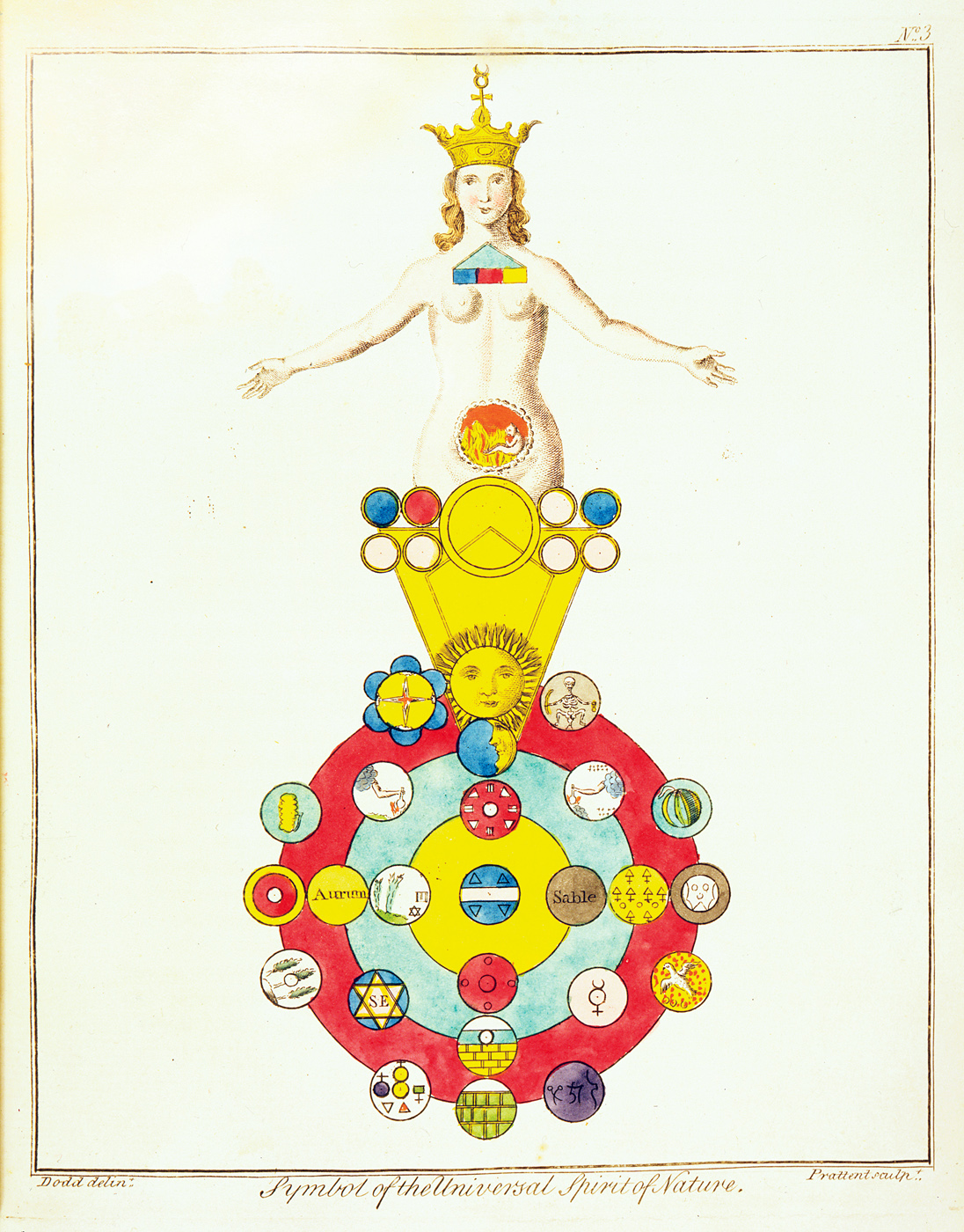
Illustration of the Universal Spirit of Nature, c. 1798.
Rather than go back to Eden or Gilgamesh for the origins of what now presents itself as a crisis, I have been looking at more recent sources: the words we use to help us visualize very complicated things. The natural order is too immense to hold in mind, so we simplify it with metaphors. According to the writer Eva Feder Kittay, metaphor “makes use of one linguistically articulated domain to gain an understanding of another experiential or conceptual domain.” Unlike a simple comparison, a metaphor does more than liken disparate things; it allows us to say that the nation is a house divided or that all the world is a stage. Richly descriptive images do not quickly dissipate. Sometimes they serve as working models of reality.
The Great Chain of Being is, perhaps, the most ancient metaphorical device for organizing nature and society. God and the angels sit on top with matter in all its forms scaled downward: humans in order of their ranks and occupations; followed by birds, fish, and beasts; then trees and other plants; and finally rocks and earthen things. Another metaphor, the “body politic,” depicted the state with the same holistic order. Since the 1960s, new models have emerged, like the biosphere, Spaceship Earth, Gaia, and the ecosystem. But the metaphor that has animated the last four hundred years is the same one—mechanism—that inspired Smith and allowed industrialists to divorce production from its environmental context.
Dating from the Scientific Revolution of the seventeenth century, the idea holds that everything from asteroids to stock exchanges consists of matter in motion. The first scientific thinkers did not revel in the wholeness of creation as much as they sought to dissect it. Knowing that everything in the world existed in relation to everything else—the essence of the Great Chain of Being—told them nothing about how the writhing entrails of a squirrel enabled it to move. In the meantime, clocks and gristmills had captured their imagination—devices that seemed to operate by concentrating physical forces, such as the tension held in a compressed coil or the rotational energy stored in a flywheel. Mechanism made its English-language debut in a 1662 pamphlet by an Anglican bishop named Simon Patrick that compared all of nature to a “rare mechanism” that could only have been built by God.
A half-century before anyone burned a lump of coal to power a steam engine, European philosophers had begun to work the machine into a general theory of everything. René Descartes said that passion, memory, and imagination “follow from the mere arrangement of the machine’s organs every bit as naturally as the movements of a clock or other automaton follow from the arrangement of its counterweights and wheels.” Thomas Hobbes began Leviathan, his 1651 treatise on the ideal commonwealth, by asserting the existence of a fundamental mechanism: “For seeing life is but a motion of Limbs, the beginning whereof is in some principal part within; why may we not say that all automata (engines that move themselves by springs and wheels as doth a watch) have an artificial life? For what is the Heart, but a Spring; and the Nerves, but so many Strings; and the Joints, but so many Wheels, giving motion to the whole body?” No one did more for mechanism than Isaac Newton. In gravitation he discovered a universal force that he believed acted on everything from a water-powered cotton mill to the orbit of the moon.
But what made the mechanism a particularly persuasive metaphor was the way in which it accorded with the experience of living in a capitalist society. During the eighteenth century, the people of Britain felt their lives determined less by the Anglican church and Parliament than the means of exchange and production. As the nature of production changed decisively within a matter of decades, it began to reorganize everything—the measurement of time, patterns in the landscape, control over work, and the distribution of wealth. City occupations multiplied, making it seem as though everyone worked together as interlocking parts of some purposeful mechanical unity. Capitalism itself struck its early admirers as a kind of natural force. Capital generates surplus value when it is invested in land (earning rent), labor (earning wages), or stock (earning interest). Surplus value can then be used as capital to generate still more surplus value—a cycle that became imbedded in social behavior as entrepreneurs looked for new ways to keep the engine going. The marketplace displayed a motion of its own, with buyers and sellers flying around like atoms, each intent on maximizing his or her own advantage. Exchange looked like Newtonian physics—a law of nature acting through humans.
Smith composed an ode to Newton in the 1750s, praising the mathematician for clearing up the muddle of human affairs. “His principles,” wrote Smith, “have a degree of firmness and solidity that we should in vain look for in any other system.” Smith had discovered a new and unassailable foundation for thinking about society. Whereas before he had thought of “all philosophical systems as mere inventions of the imagination,” in Newton he discovered concepts so definite that they seemed “as if they were the real chains which Nature makes use of to bind together her several operations.” The Wealth of Nations is filled with the language of physics, with Smith likening capital to a force that “puts into motion” some quantity of labor. The “invisible hand” resembles Newton’s gravitational field, in which the pull of self-interest is as certain as the earth’s attraction to the sun.
As Smith and many others argued, a mechanism functions anywhere with the right inputs. As long as wood and wool keep flowing, a mill hums along. That machines worked as long as they had fuel and something to do encouraged the view among Smith’s successors that the industrial economy was inherently stable and could only be upset by things coming from outside of it. But thinking of the economy as a self-contained mechanism prevented people from understanding how industry affected their surrounding environment. An engine, a factory, and a nation’s GDP all externalize their needs and effects, placing the burden on environments to furnish their raw material and absorb their waste. Depleted fisheries, extinct birds, vanishing ice shelves, polluted rivers, bleached coral—for two centuries manufacturing moved from resource to resource, from fishery to fishery, following an orderly conception of progress that took no responsibility for the disorder it caused.
Although political economists only grudgingly admitted it for centuries, economies exist in actual places. The mechanistic worldview espoused by Newton and Smith ignores the fact that green and wriggling things are not just clusters of atoms but the inhabitants of ecological systems. Carbon might be everywhere and abundant, but Chinook salmon are not, and they can’t be removed from Alaskan fisheries without altering the equilibrium of those ecosystems. Salmon are limited in number, reproduce only under certain conditions, and continue to evolve in response to their environment. When we think of matter in its particular forms, in other words, every economy becomes a commerce in scarce things.
A number of metaphors have competed to replace mechanism. Charles Darwin’s theory of evolution revealed the natural order to be a ferocious struggle for existence. The end result of hunting, starving, and locking horns with rivals turned out to be the evolving form of nature itself. Few people before the twentieth century, however, appreciated evolution’s most remarkable implication: it gave the natural environment a direct role in the composition of life. The fauna didn’t pop into existence on the fifth day of creation; they crawled out of a particular physical context consisting of climate, food, and other conditions that continually drive adaptation and speciation. Life responds to its environment.
The science of ecology builds on this insight by proposing a community model in which every plant, animal, and protozoa lives in relation to every other. A salt marsh generates all its grasses, fishes, and birds from a more or less constant stock of nutrients, activated by an open-ended flow of energy from the sun. Anything that dies gives up its matter for recomposition into something else. If an economy operated on the same principle, it would not grow—at least not in the same sense that we have known growth. It would produce no waste, deplete no species, and manufacture products with the ecological impact of bird dung. It would function, in other words, within environments rather than as parasites upon them. If the economy worked like an ecosystem, it would exist in a state of homeostasis.
The people who have thought most about how to transform the economy from a waste-making mechanism into an ecosystem are a group of interdisciplinary scientists called industrial ecologists. These ecologists want to place manufacturing within the capacity of environments to generate resources and assimilate waste. The old way of dealing with pollution was for governments to clean up rivers, monitor smokestacks, and set standards for air and water quality. The new way looks at the chemicals that go into manufacturing to ensure that what comes out on the other end does no harm. Instead of regarding the human economy as independent of the overall economy that governs life on earth, industrial ecology seeks to reconcile the two, fixing industrial production within the capacities of environments. Retooled and rethought, a factory could “metabolize” matter and energy as any organism does. An engine might not respond to its environment, but it can be made to operate on the same principles.
None of this excludes the possibility of a new definition of development—when a system becomes more efficient without getting bigger. In the nineteenth century, John Stuart Mill refuted the idea that the economy would collapse if it stopped accelerating. “I am inclined to believe that it would be, on the whole, a very considerable improvement on our present condition,” he wrote of a stationary economy. “It is an incident of growth, not a mark of decline, for it is not necessarily destructive of the higher aspirations and the heroic virtues.” We might prefer to believe that we will inevitably develop a more sustainable arrangement with the natural environment, but the truth is that we will need to make choices. Do we want to plant every arable acre to sustain our present demand, or do we want shortgrass prairie on the Great Plains? If the economic system continues to depend on the expendability of natural capital, then it will destroy its basis for existing. Thoughtless exploitation of resources is not written in our genes or in our sacred texts or in the Constitution. It is a strikingly recent phenomenon and has defined the human race for only a few seconds on the evolutionary clock. Moving forward requires letting go of our sense of exceptionalism and embracing our own limitations along with those of the earth.
